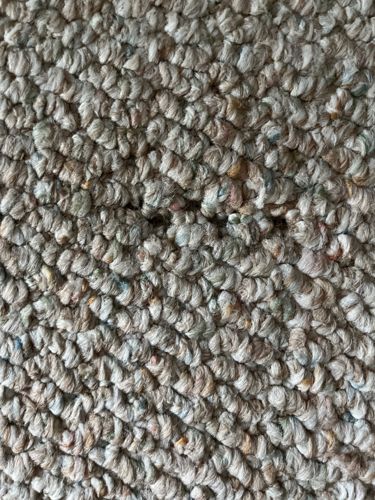Carpet Beetle (appears to be a larval stage or a small hole/damage caused by one)
Scientific Name: There are several common species, including Anthrenus scrophulariae (Common carpet beetle), Trogoderma variabile (Warehouse beetle), and Attagenus unicolor (Black carpet beetle). Without a clearer view, a specific scientific name cannot be given.
Order & Family: Order: Coleoptera, Family: Dermestidae
Size: Larvae: 2-5 mm; Adults: 2-4 mm

Natural Habitat
Indoors: Carpets, rugs, upholstered furniture, clothing, blankets, stored foods, museums (on specimens). Outdoors: Bird nests, animal nests, dead animal carcasses, flowering plants (adults).
Diet & Feeding
The larvae feed on a wide variety of animal and plant products, including wool, silk, feathers, leather, fur, pet hair, dried meat, and occasionally synthetic fibers if soiled. Adult carpet beetles feed on pollen and nectar.
Behavior Patterns
Larvae of carpet beetles are often found in dark, undisturbed areas. They are slow-moving and tend to roll up or become motionless when disturbed. Adults are active flyers and are attracted to light.
Risks & Benefits
Risks: Significant pests of homes, museums, and warehouses. Their feeding can cause irreversible damage to natural fibers, upholstered furniture, clothing, and stored goods. They can also cause allergic reactions (dermatitis) in some individuals due to their larval hairs. Benefits: In nature, they play a role in decomposition, consuming animal remains and shed materials.
Identified on: 8/11/2025